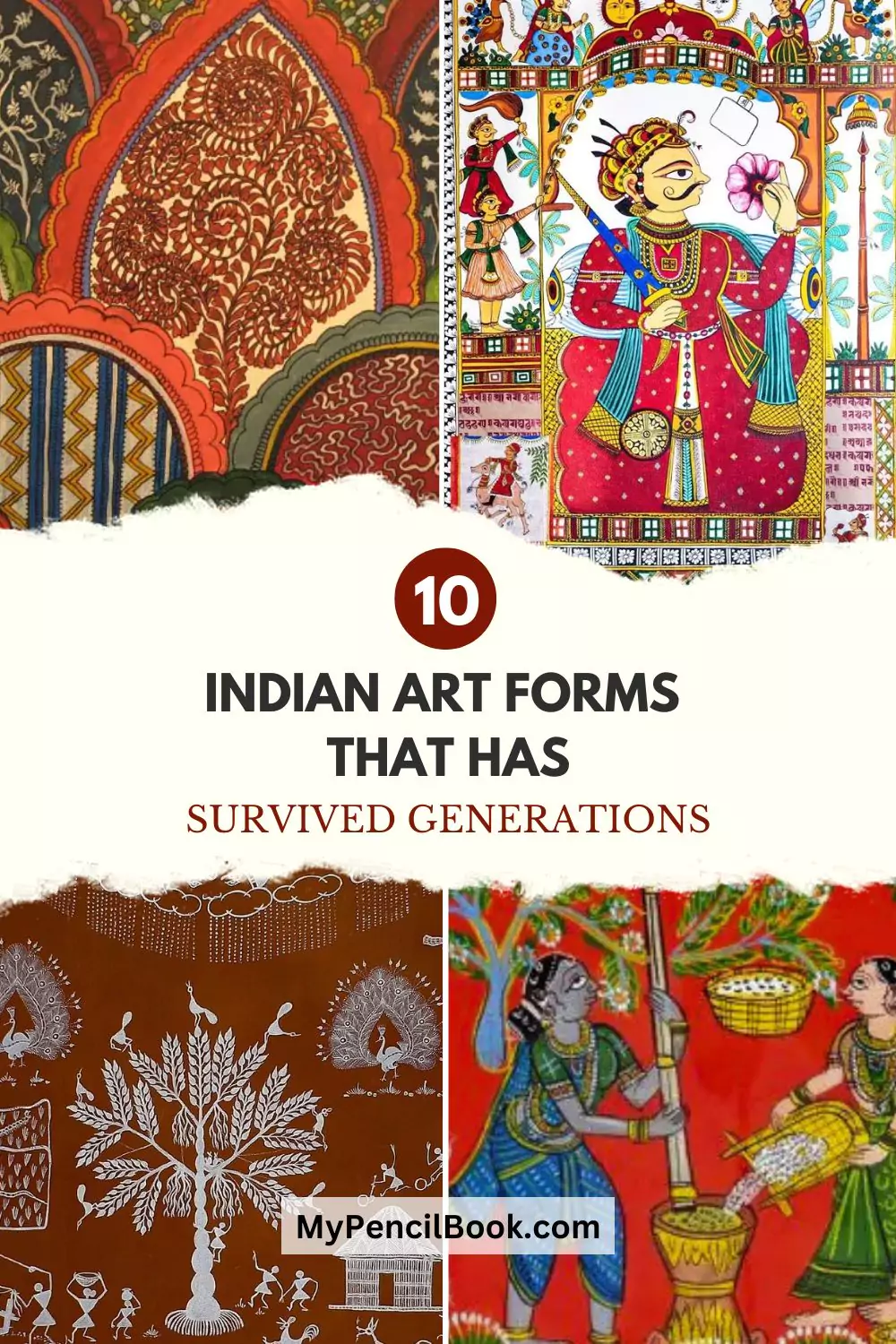
Credit: Flickr
India is a land of rich culture and tradition. For centuries, India has been home to some of the most beautiful art forms in the world. From painting and sculpture to architecture and dance, Indian art has long been revered for its beauty and intricacy. Many art forms have survived generations and are still practiced today. But in this article, you will see 10 Indian art forms that have survived the test of time.
1. Madhubani Painting
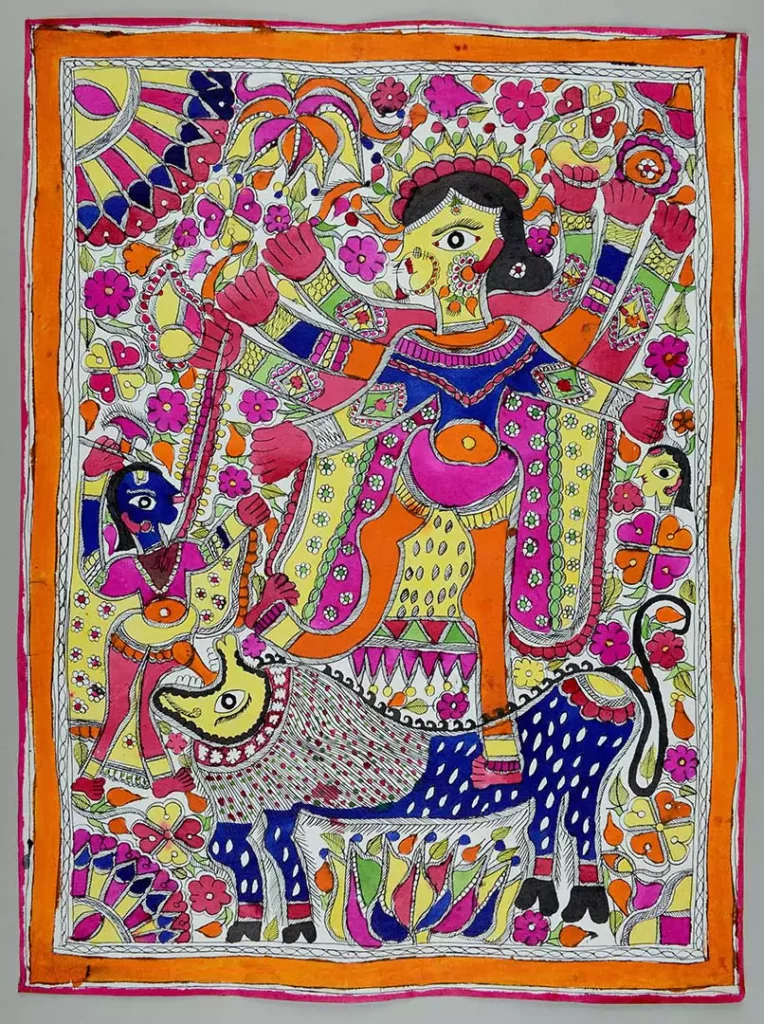
Madhubani Painting is a form of Indian folk painting, practiced in the Mithila region of Bihar state, India. The name “Madhubani” comes from two words in the local dialect – Madhu, meaning honey, and ban, meaning forest.
Madhubani paintings are traditionally done on freshly plastered mud walls and floors of huts, using natural dyes and pigments. The themes of these paintings are often religious or cultural festivals, scenes from the palace or village life, and nature.
Also See: 7 Art Styles That Will Never Die
Today, Madhubani painting has gained popularity both within India and internationally. Madhubani artists have started to use a variety of other surfaces such as cloth, paper, and canvas. They have also started to experiment with new techniques and materials, while still staying true to the traditional roots of the art form.
2. Warli Painting

Dating back thousands of years, Warli painting is a traditional art that originated in Maharashtra. White, black, and red colors are mostly used in this type of art to create designs in simple geometric shapes. The paintings depict scenes from the daily life of tribals, such as farming and wedding ceremonies, as well as religious stories.
3. Miniature Painting
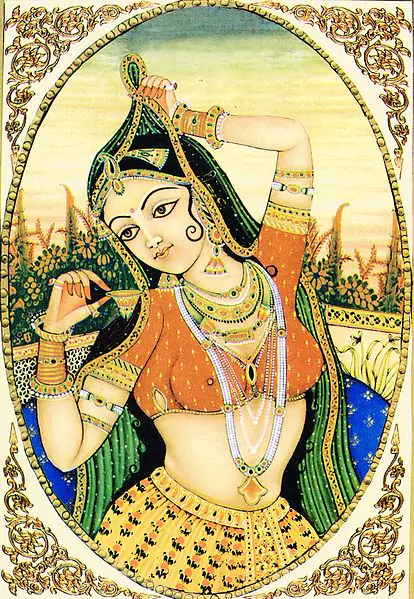
This art style originated around the 1600 – 1605 centuries. In this style, artist uses wasli paper, brushes, and clear water-based paint such as tempera, and Arabic gum, to create a detailed image.
The miniature paintings size around 14.3 cm in width with 8.6 cm in height.
Miniature paintings can be found in old Rajasthani forts and museums.
4. Kalamkari Painting
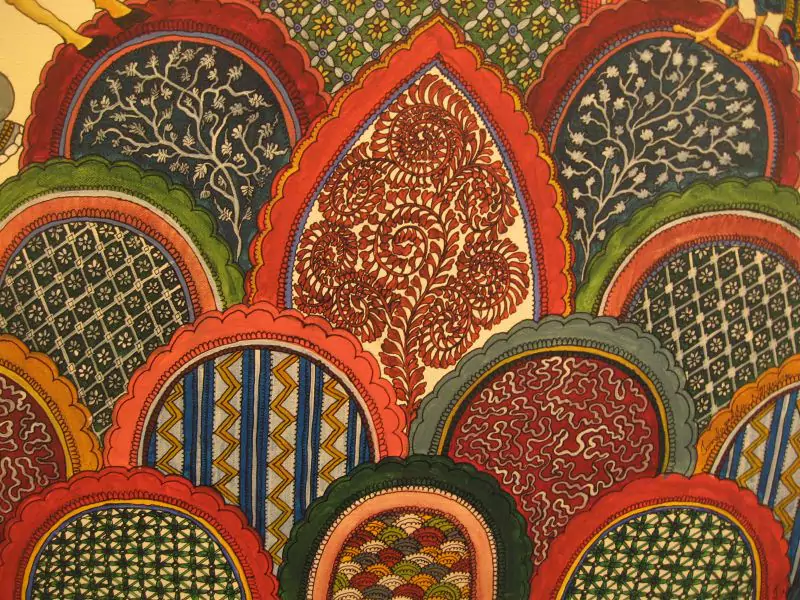
Kalamkari painting is a type of hand-painted or block-printed cotton textile, made popular in the Indian state of Andhra Pradesh.
In India, there are two styles of Kalamkari art, the Machilipatnam style, and the Srikalahasti style. The art is painted on cotton or silk fabric using a tamarind pen with natural dyes and wooden blocks.
The word ‘Kalamkari’ is derived from two words – ‘kalam’ meaning pen, and ‘Kari’ meaning work – signifying the penwork nature of the craft. It is believed to have originated in Andhra Pradesh and Telangana over 3000 years ago.
5. Phad Painting
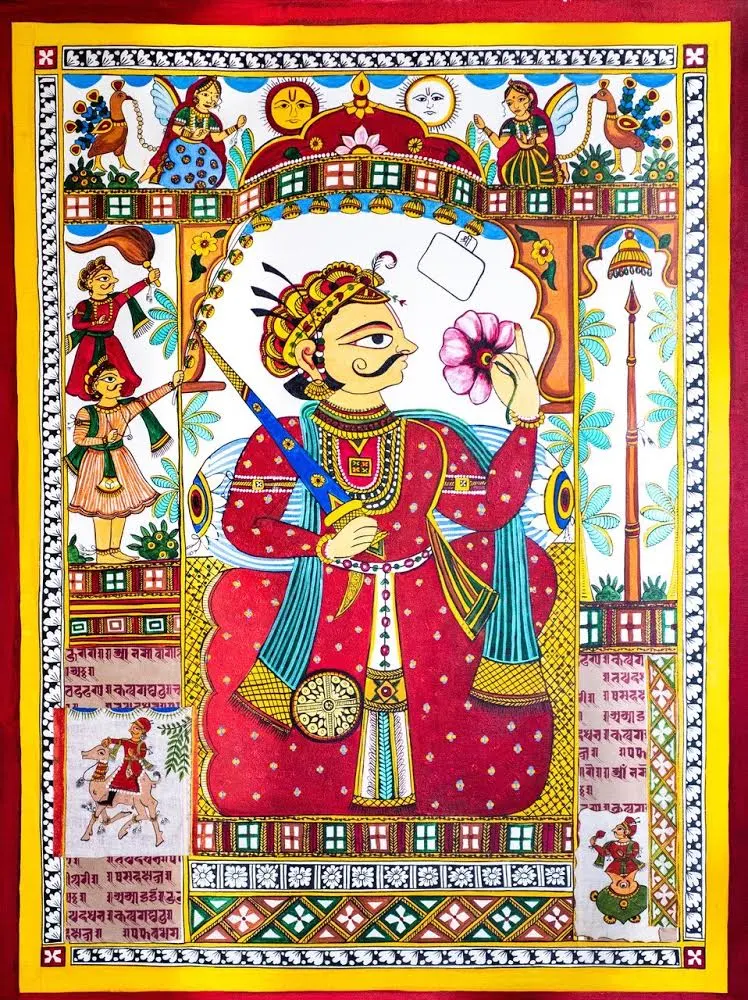
It is a traditional scroll and folk form of Rajasthan painting. It is a 700-year-old form of art. The paintings are usually done on cloth, canvas, and walls that depict portrays him as a divine character and mostly they represent the story of the Pabuji & Devnarayanji (local hero-gods). It is often brightly colored with highly detailed.
The Phad painting tradition is still alive and well in India today. Many artists continue to create beautiful Phad paintings. If you’re interested in seeing some Phad paintings for yourself, you can find them in art galleries, or online.
6. Pattachitra Painting
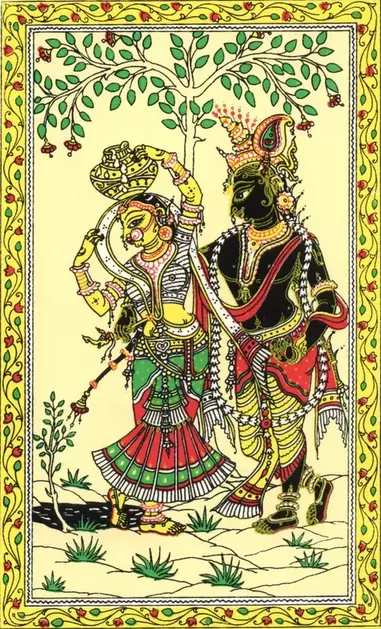
Originated in Odisha, in the 5th century A.D. This is one of the other oldest art forms that is done on a piece of cloth or canvas, using natural dyes and pigments. The word ‘Patta’ means ‘cloth’ in Sanskrit, and ‘Chitra’ means ‘picture’.
These art forms are usually brightly colored and depict scenes from Hindu mythology, such as the stories of Radha Krishna or Ramayana. These paintings are often used as decoration in temples, or as scrolls that can be hung on walls.
7. Gond Painting
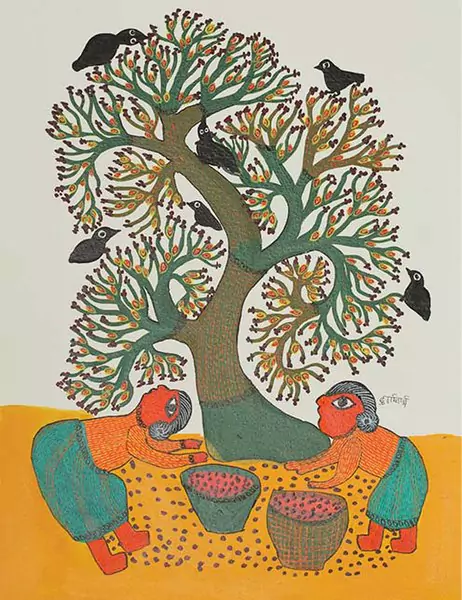
Originating in Madhya Pradesh, Gond is mainly a traditional form of folk art that use bright colors and intricate patterns. The paintings are typically done on walls or floors, and often depict scenes from nature or daily life.
Gond paintings are created using a variety of materials, including natural dyes, cow dung, and crushed leaves. The paintings are usually done by women, and take several days to complete.
Gond paintings are not only beautiful but also have deep cultural significance. They provide a glimpse into the lives of the Gond people, who have a rich history and tradition of storytelling.
8. Tanjore Painting
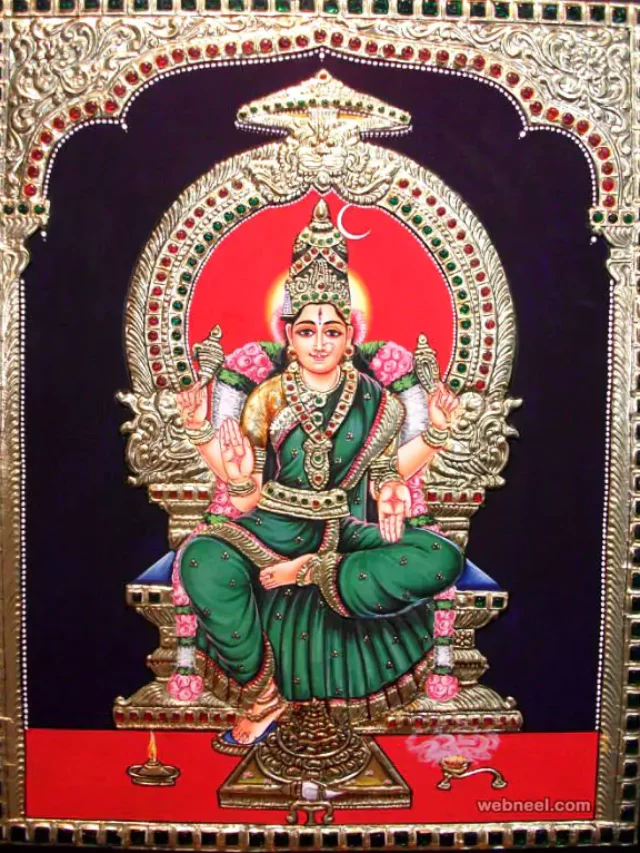
Tanjore painting is a classical form of art, also known as Thanjavur. It originated in the town of Thanjavur in Tamil Nadu, India. It is characterized by their use of vibrant colors, elaborate gold leaf work, and depiction of Hindu deities and scenes from Hindu mythology.
Tanjore paintings are created using a unique technique where the painting is first sketched on a cloth or paper and then transferred onto a wooden board. Once the sketch is complete, gold leaf is applied to the areas which are to be gilded. The painting is then colored using natural dyes and finally, it is varnished to protect it from dust and moisture.
The Thanjavur style of painting reached its peak of popularity during the Maratha rule in India (1600-1800).
9. Cheriyal scroll painting
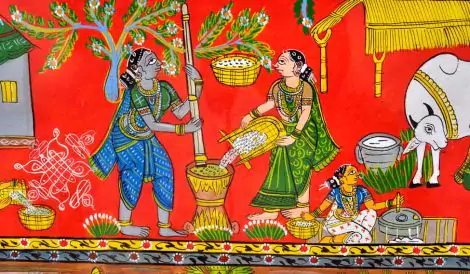
Cheriyal Scroll Painting is a Hyderabad-based art form that combines Nakashi art with local Telangana motifs.
The scrolls are painted on both sides with a continuous narrative scene, usually depicting a mythological or religious story.
The paintings are characterized by their bright colors and bold lines.
This art style is an important part of Telangana’s cultural heritage. They provide a glimpse into the state’s rich history and tradition of storytelling.
10. Kalighat Painting
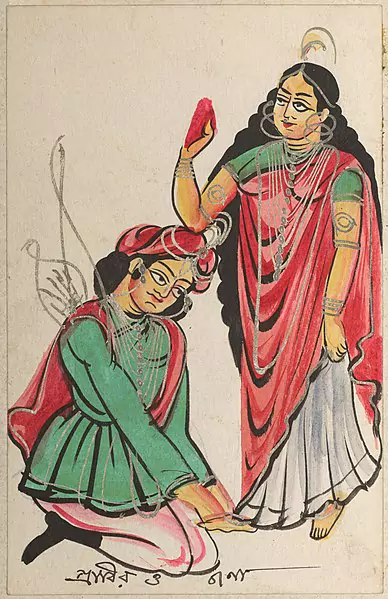
First created in the nineteenth century in West Bengal. The paintings were created as devotional images for use in temples. However, they soon gained popularity as popular prints among the general public.
The paintings typically depict Hindu gods and goddesses, scenes from religious texts, or daily life scenes. Kalighat painters use bright colors and exaggerated proportions to create their distinctive style.
Today, Kalighat paintings are still produced in India and have also gained popularity among collectors of folk art around the world.
Webstory: Ancient Indian art forms that are still practised today
Read More
